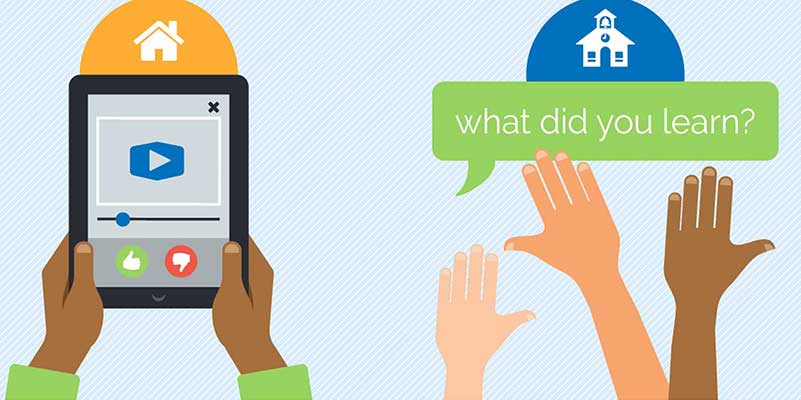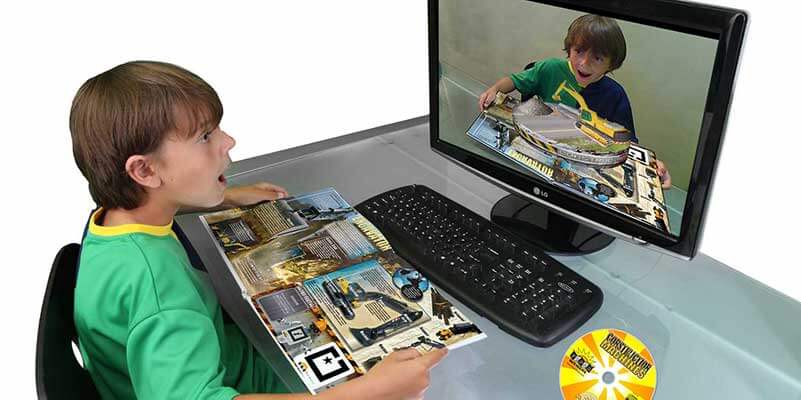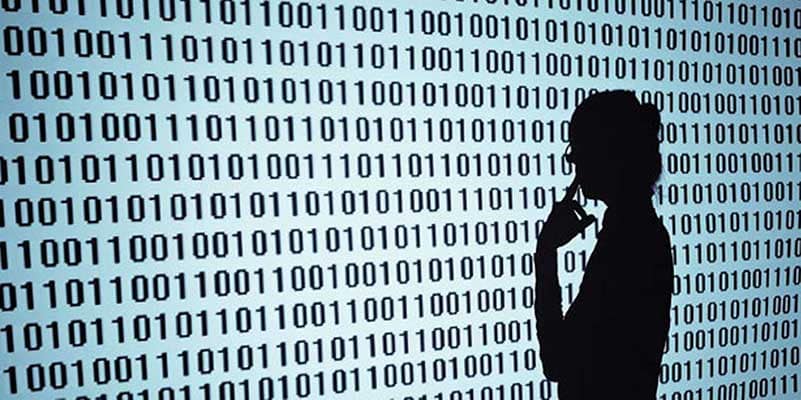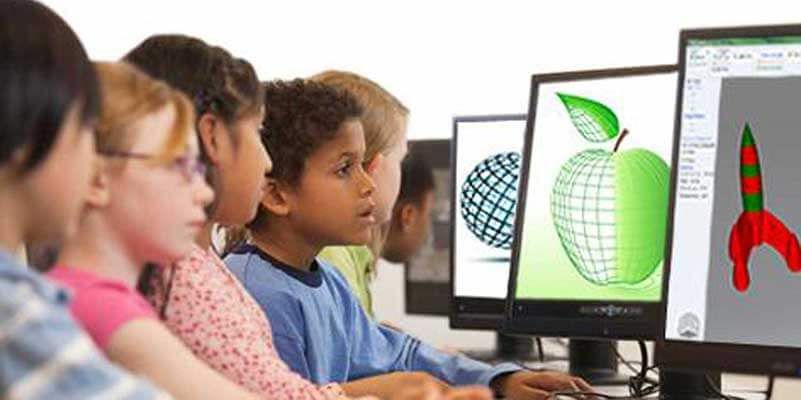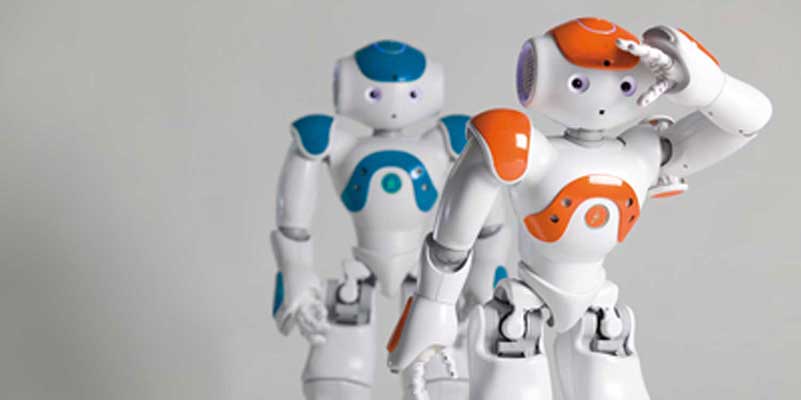Education is something we strive for – something we motivate our kids to pursue in their lives so that they are in a better position to attain the necessary abilities to find work, gain power, and create a position for themselves in the outer world. Education is not a stranger to technology, and the more we progress, the more we are moving farther from the old pencil and paper style of learning and teaching. Going forward, we might not have to take our kids to schools, as they will telecommute with their teachers; and use their laptops, tablets or other gadgets to digitally connect, do their homework, learn to write, and ultimately, pass examinations. We will be able to enter a world of augmented reality, a new form of our perception where everything is altered to suit the needs of a perfect learning environment. Things will connect and respond, and sensors will help kids communicate and solve problems.
Can you imagine a visually impaired student who is given a special card which, when registered with a computer, automatically enlarges font size? This is a great opportunity to constructively help students with special needs reach their goals without just trying to fit them in and feel sorry for them. “Big data” analysis will change the way we assess students, and how they analyze data for projects or find solutions. 3D printing could be an excellent way for students to better understand geological formations on a scale that is not presentable through 2D images. There are many implications as to how technology can help both students and teachers in understanding what is important in the learning process. Nevertheless, it is almost certain that technology is going to turn schools and education upside down.
Free trendservice
Flipping a classroom to encourage students
Are you or your kids tired of school in its typical form? Tired of going to school at a certain time, learning the same things in a preset program, passing a written examination just to get a grade which might not be that important in the end? Well, guess what, this might change sooner than you think! The “flipped classroom” project has demonstrated much success in providing opportunities to design and deliver courses using active learning and engagement strategies to facilitate students’ teamwork, problem solving, and critical thinking skills in a collegial environment. Giving students the ability to choose their learning time, prioritize their workload, and manage their time more effectively to get through a heavy reading workload offers them a much needed freedom which yields better results, makes them more responsible and generally gets them more interested for work!
Courses will be more fun, stimulating, and “flipped”; they will become an interactive and personal experience that will ultimately encourage students to gain more interest in the subject and strive to learn at home so that they can show their knowledge in class. Students need more time and individual attention to learn material. With the resources for flipped learning, students can watch or listen over and over again while pausing the content, working a bit, and then playing more. As students do their “homework” at school, teachers can immediately address problems as they are walking around and listening to conversations. Teachers would know the students who are struggling, and they can give these students the attention they need. Through this process, as students see success, their confidence and work ethic will skyrocket! Why cannot classes be “meetings” and not “lectures”? Is it wrong to give more freedom to students and not “tie” them to the school tables? It is not wrong; in fact, it is much needed.
Augmented reality lends new dimensions to learning
People like illusions. They like their reality altered, because it gives them the avanturistic edge in life. This is same in every aspect of life, and therefore it will not be different in education. Students are always open for new challenges, and they like trying out everything that is not “set” or programmed, because it gives them a chance to run away from a typical studying process. This is exactly what augmented reality will offer them – an opportunity to manipulate and combine elements from their Android or iOS devices, rather than just reading about them in a textbook. Google has already offered students tools to creatively use augmented reality while learning. Few examples are Google Sky Map, which automatically identifies stars and constellations that appear on a camera lens, and GeoGoogle, which allows the learner to calculate altitude and the distance between two points using a 3D compass.
Augmented reality can provide a rich contextual customized learning environment and contents for every individual. Educators are well aware that learning deepens not just through reading and listening but also through creating and interacting. Students will be able to conduct experiments, mix elements, or learn history through augmented reality; witness the medieval scenery in person; or better yet, experience their lessons live. In the past, augmented reality was mainly used for marketing purposes, even in education. Today we need more projects that involve augmented reality in educational projects, helping students achieve greater results and ease their studying. This can be performed across all levels of education, right from K12 to university. Most people who interact with augmented reality for the first time have a mind-blowing experience but fail to consider classroom applications.
In elementary school classrooms, we could use augmented reality to create active learning experiences hitherto inconceivable, and in the process, redefine the learning space! How about mathematical equations solved through augmented reality glasses? For students to develop the needed skills, schools need to move from a rote learning style and an “I teach, you listen” approach to a more active and participatory learning method where learners take responsibility for learning and are engaged participants rather than passive observers.
Implications of the Internet of Things on education
Connected devices is the new buzzword. Internet of Things (IoT) cannot avoid education because it can improve it in multiple ways. IoT can help disabled and visually impaired students with field work and research. If students are collecting data out in the field for research, tagging physical objects to find and analyze data about the object (and have to feed into other programs for analysis) is one way IoT can be used in education. Wouldn’t you enjoy objects around you, giving you information about your current subject of learning, or going out, even as all connected things send you messages regarding homework or study project, helping you with the conclusion?
This would eventually be possible, because a smarter world makes our environment smart as well, and all this information and technology is designed to help us find the answers and make our lives easier. Observing wildlife, studying history or archeology, or analyzing previously watched and studied situations which the connected objects have memorized are all possibilities that we will be able to explore. Historians and archaeologists can also use smart objects in the same ways as shippers and retailers. Tiny, affordable trackers can be used to catalog massive collections of documents, artifacts, and fossils. Applications for the IoT are already being leveraged in sectors such as healthcare and customer service, and now schools are joining the party. Some of the ways the IoT can benefit education may be apparent, while others are not as obvious. Schools typically have finite resources, which means the more they streamline day-to-day operations, the more money can be spent on actually teaching students. Time consuming activities such as manually taking attendance and bringing the information to a central office can be eliminated with the use of connected devices that send the data where it needs to go instantly. Imagine the extent? Well, it has no boundaries.
Big data is making education smarter
Information is a key component of education and learning. It is all based on data, analysis, watching, reading, observing and, ultimately, repeating it to the next generation of students. Big data analysis will help teachers and students arrive at some new conclusions which they could not grasp before, and that too on a shorter notice. A typical school system is always swarmed by huge volumes of unnecessary data, improperly used and stored. New ways of structuring all this information and quick ways of analyzing it will make the whole system work better and in an effective manner. Managing the technology poses multiple challenges for schools, such as storing, processing, and providing access to the data—not just student grades but also factors such as attendance, disciplinary actions, sports activities, and medical records. The data is often in different databases and incompatible formats, and requires different passwords. Wouldn’t schools benefit if all possible records, such as attendance, grades, school projects, and parents visits are being stored and made easy accessible? Big data makes everything so much easier.
3D printing will transform education
3D printing is a new technology which is developing really quickly and, as educators, we can’t afford to miss out on keeping up with new technologies. Of course, schools are still in the early stage of adoption of this innovative technology, but the real excitement lies in what is yet to come. 3D printing comes with several features that can revolutionize education, such as 3D visual aids that can be used in a classroom, particularly in illustrating a hard-to-grasp concept. Can we think of a better way to show students some realistic patterns in engineering, architecture, or multimedia through 3D mini-modeling? Or just showcase what they need to perceive in front of them, rather than explaining or showing pictures? Or how about complex mathematical problems or graphs shown visually and directly in front of students as a 3D printed model? It is clear that mixing fun with education is what we should strive to. Students learn in an easier manner if the lecture is not presented only by a textbook, but rather through some kind of a visual. What better visual can we have than an object in front of them? They would certainly remember that!
Robots in education
Within the next 10 years, we might have robots popping up in classrooms. Education is an industry that is particularly ripe for change. Schools often struggle with overcrowded classrooms, which means students aren’t getting all the attention they need. Robotics will open new career paths and give students new insights on planning their careers. The use of robots in the classroom subconsciously introduces students to possible career paths they may well have never considered. Wouldn`t it be a great idea if robots could help autistic children socialize? At the same time, can we imagine a robotic teacher for our kids? Is it ethical, moral, or safe?
Robots could be the first unbiased teacher, not leaning toward any particular student. This could revolutionize the whole process of education. We are used to having a human teacher for our kids, with whom we can interact freely and whom we usually trust. However, a robot would not be a threat to our children in school. It can actually be of much more help, due to its precise skills and the fact that it is not prone to the flaws a human being usually is. It can track students’ progress, tape it, analyze it, and use later to help a student understand its remarks. This would greatly enhance the ability to learn on students’ previous mistakes. Can you imagine a robot that can do math with your children? Children do not want to do more math. But with a robot, they can have fun, and while they have fun, they can also learn. Maybe a robot can grade students better than a living teacher!
Wearable technology for the future of education
Would you say that wearing a gadget which is both smart and easy to use while studying, attending classes, or working on school projects could help you achieve better results? What if you could automatically capture pictures of notes with your watch or wristband, or record whatever is told or written during a lecture without you having to pay attention to it? This might be happening very soon, and the first breach has been made with Google Glass. It has many different applications, and education is definitely one of them. Understanding foreign lectures with simultaneous translation through Google Glass will blur all borders in the virtual world of science. Wearable technology in education can enhance a child’s ability to more naturally interact with its environment, and be creative and innovative.
Students will be more easily able to access information without any obstructions. Using wireless gloves to motion-sense students’ behavior will keep them occupied and give them a feeling of direct involvement while educating themselves. Google Glass is making a breakthrough since it can be used to make “how-to” videos that are more useful than regular education videos, and show the point of view of the wearer. Students can wear the Glass to record themselves solving a problem (for example, calculus). Teachers can then assess and correct the method used. Imagine wearing the Glass and recording physical activities such as building something, enabling your teachers to later review your motor skills! Options are limitless and we are going to have a chance to explore them first hand in the coming period!
“Studying” the future
During our entire life, we always study and learn something new. The process never ends and, at a certain point, it gets pretty boring. Most students will say school is not interesting and it needs a spark that will highlight something worth taking their free time to actually participate. Technology can be this spark – it can “gamify” schools in future and make it all look like a fun time. If you send your kid to a field trip, it would be more fun for him to do it virtually, and to be able to visit any historical site in the world just by putting on a gadget such as Oculus Rift. Classes will be changed, flipped to alter students’ experience and leave behind the old ways of studying. All this will look very much different for our kids in schools than it has been for us back in the day. It will not only make school more interesting but also more productive.
Video Credits: Conscious Educating
Students will definitely give better results and stay focused on the important things if they are able to concentrate more and do not lose time on less important things during a class. Robots, wearables, and a different approach fueled with technology will give them a new perspective in the educational process, and this is precisely what education needs. One of the most important aspects of our society is education. Through education, all things are possible: the next generation will be able to carry the torch forward and lead the path in industrial, societal and digital progress. These days, however, the methods used to teach are changing rapidly with the times. Classes no longer depend on blackboards and chalk to get the message across, and our learning centers are becoming more digital by the day. As our classrooms become progressively hyper-connected, the traditional forms of teaching are facing the heat.
Share via:



